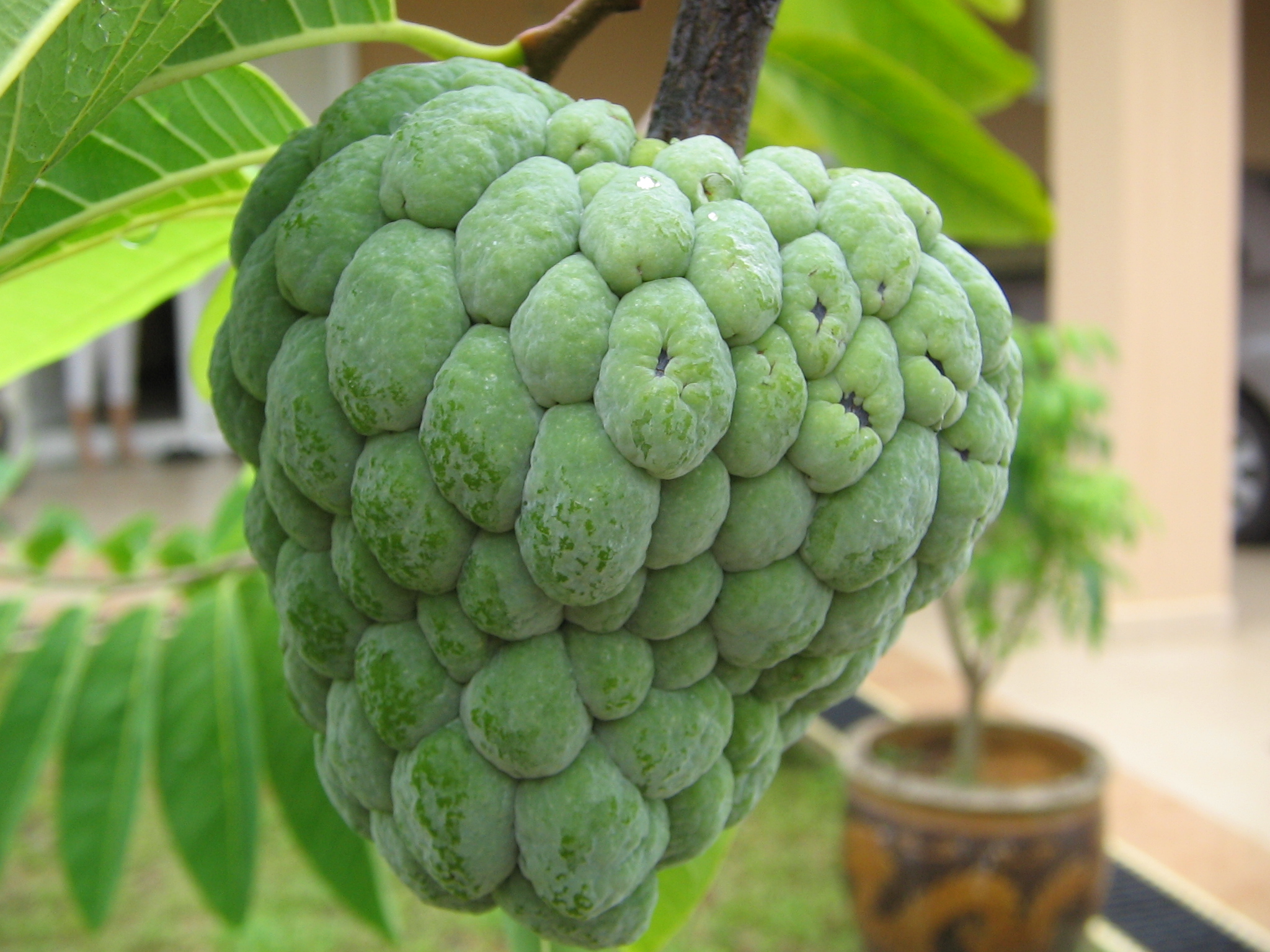In some parts of the world, the word "to eat" literally means "to eat rice." All varieties of rice are available throughout the year, supplying as much as half of the daily calories for half of the world's population.
The process that produces brown rice removes only the outermost layer, the hull, of the rice kernel and is the least damaging to its nutritional value. The complete milling and polishing that converts brown rice into white rice destroys 67% of the vitamin B3, 80% of the vitamin B1, 90% of the vitamin B6, half of the manganese, half of the phosphorus, 60% of the iron, and all of the dietary fiber and essential fatty acids. Fully milled and polished white rice is required to be "enriched" with vitamins B1, B3 and iron.
The difference between brown rice and white rice is not just color! A whole grain of rice has several layers. Only the outermost layer, the hull, is removed to produce what we call brown rice. This process is the least damaging to the nutritional value of the rice and avoids the unnecessary loss of nutrients that occurs with further processing. If brown rice is further milled to remove the bran and most of the germ layer, the result is a whiter rice, but also a rice that has lost many more nutrients. At this point, however, the rice is still unpolished, and it takes polishing to produce the white rice we are used to seeing. Polishing removes the aleurone layer of the grain--a layer filled with health-supportive, essential fats. Because these fats, once exposed to air by the refining process, are highly susceptible to oxidation, this layer is removed to extend the shelf life of the product. The resulting white rice is simply a refined starch that is largely bereft of its original nutrients.
Our food ranking system qualified brown rice as an excellent source of manganese, and a good source of the minerals selenium and magnesium. The complete milling and polishing that converts brown rice into white rice destroys 67% of the vitamin B3, 80% of the vitamin B1, 90% of the vitamin B6, half of the manganese, half of the phosphorus, 60% of the iron, and all of the dietary fiber and essential fatty acids. By law in the United States, fully milled and polished white rice must be "enriched" with vitamins B1, B3, and iron. But the form of these nutrients when added back into the processed rice is not the same as in the original unprocessed version, and at least 11 lost nutrients are not replaced in any form even with rice "enrichment."
Brown Rice is Rich in Fiber and Selenium
For people worried about colon cancer risk, brown rice packs a double punch by being a concentrated source of the fiber needed to minimize the amount of time cancer-causing substances spend in contact with colon cells, and being a very good source of selenium, a trace mineral that has been shown to substantially reduce the risk of colon cancer.In addition to supplying 14.0% of the daily value for fiber, a cup of cooked brown rice provides 27.3% of the DV for selenium, an important benefit since many Americans do not get enough selenium in their diets, yet this trace mineral is of fundamental importance to human health. Selenium is an essential component of several major metabolic pathways, including thyroid hormone metabolism, antioxidant defense systems, and immune function. Accumulated evidence from prospective studies, intervention trials and studies on animal models of cancer has suggested a strong inverse correlation between selenium intake and cancer incidence. Several mechanisms have been suggested to explain the cancer-preventive activities of selenium. Selenium has been shown to induce DNA repair and synthesis in damaged cells, to inhibit the proliferation of cancer cells, and to induce their apoptosis, the self-destruct sequence the body uses to eliminate worn out or abnormal cells.
In addition, selenium is incorporated at the active site of many proteins, including glutathione peroxidase, which is particularly important for cancer protection. One of the body's most powerful antioxidant enzymes, glutathione peroxidase is used in the liver to detoxify a wide range of potentially harmful molecules. When levels of glutathione peroxidase are too low, these toxic molecules are not disarmed and wreak havoc on any cells with which they come in contact, damaging their cellular DNA and promoting the development of cancer cells.
Not only does selenium play a critical role in cancer prevention as a cofactor of glutathione peroxidase, selenium also works with vitamin E in numerous other vital antioxidant systems throughout the body. These powerful antioxidant actions make selenium helpful in the prevention not only of cancer, but also of heart disease, and for decreasing the symptoms of asthma and the pain and inflammation of rheumatoid arthritis.
Lower Cholesterol with Whole Brown Rice
Here's yet another reason to rely on whole foods, such as brown rice, for your healthy way of eating. The oil in whole brown rice lowers cholesterol.When Marlene Most and colleagues from Louisiana State University evaluated the effects of rice bran and rice bran oil on cholesterol levels in volunteers with moderately elevated cholesterol levels, they found that rice bran oil lowered their LDL (bad) cholesterol.
The study, published in the American Journal of Clinical Nutrition, was divided into two parts. First, 26 subjects ate a diet including 13-22g of dietary fiber each day for three weeks, after which 13 switched to a diet that added defatted rice bran to double their fiber intake for five weeks. In the second part of the study, a randomized crossover trial, 14 subjects ate a diet with rice bran oil for 10 weeks.
While the diet including only defatted rice bran did not lower cholesterol, the one containing rice bran oil lowered LDL cholesterol by 7%. Since all the diets contained similar fatty acids, the researchers concluded that the reduction in cholesterol seen in those receiving rice bran oil must have been due to other constituents such as the unsaponifiable compounds found in rice bran oil. The scientists suggest that the unsaponifiables present in rice bran oil could become important functional foods for cardiovascular health. But why extract justone beneficial compound from brown rice when you can reap allthe cardioprotective benefits supplied by the matrix of nutrients naturally present in this delicious whole food? In addition to unsaponifiables, this whole grain also supplies hefty doses of heart-healthy fiber, magnesium, and B vitamins.
Reduce Your Risk of Metabolic Syndrome
In our opinion, neither piece of dietary advice is complete, accurate or likely to help us stay slim or healthy. Just as different kinds of fats have different effects in our bodies (e.g., saturated and trans fats are linked to increased risk for cardiovascular disease while omega-3 fats decrease cardiovascular disease risk), some carbohydrates, such as whole grains, are healthful while others, such as refined grains and the foods made from them, are not.
The latest research is clearly supporting this vital distinction. Refined grains and the foods made from them (e.g., white breads, cookies, pastries, pasta and rice) are now being linked not only to weight gain but to increased risk of insulin resistance (the precursor of type 2 diabetes) and the metabolic syndrome (a strong predictor of both type 2 diabetes and cardiovascular disease), while eating more wholegrain foods is being shown to protect against all these ills. Common features of the metabolic syndrome include visceral obesity (the "apple shaped" body), low levels of protective HDL cholesterol, high triglycerides, and high blood pressure.
In one of the most recent studies, which appeared in Diabetes Care, researchers who analyzed data on over 2,800 participants in the Framingham Offspring Study, found that the prevalence of both insulin resistance and the metabolic syndrome was significantly lower among those eating the most cereal fiber from whole grains compared to those eating the least.
Prevalence of the metabolic syndrome was 38% lower among those with the highest intake of fiber from whole grains. Conversely, study subjects whose diets had the highest glycemic index and glycemic load, both of which are typically low in whole foods and high in processed refined foods, were 141% more likely to have the metabolic syndrome compared to those whose diets had the lowest glycemic index and glycemic load. In other words, compared to those whose diets were primarily composed of whole high fiber foods: whole grains, legumes, vegetables and fruits.
The researchers concluded, "Given that both a high cereal fiber content and lower glycemic index are attributes of wholegrain foods, recommendation to increase wholegrain intake may reduce the risk of developing the metabolic syndrome." Our perspective at the World's Healthiest Foods is that a way of eating that relies on the healthiest foods from all the food groups—the whole foods that contain the healthiest fats, carbohydrates and proteins—is the most effective, intelligent, and most enjoyable way to not only lower your risk of developing the metabolic syndrome, but to stay slim, vital and attractive throughout a long and healthy life.
Brown Rice and Other Whole Grains Substantially Lower Type 2 Diabetes Risk
Brown rice and other whole grains are a rich source of magnesium, a mineral that acts as a co-factor for more than 300 enzymes, including enzymes involved in the body's use of glucose and insulin secretion.The FDA permits foods that contain at least 51% whole grains by weight (and are also low in fat, saturated fat, and cholesterol) to display a health claim stating consumption is linked to lower risk of heart disease and certain cancers. Now, research suggests regular consumption of whole grains also reduces risk of type 2 diabetes. (van Dam RM, Hu FB, Diabetes Care).
In this 8-year trial, involving 41,186 particpants of the Black Women's Health Study, research data confirmed inverse associations between magnesium, calcium and major food sources in relation to type 2 diabetes that had already been reported in predominantly white populations.
Risk of type 2 diabetes was 31% lower in black women who frequently ate whole grains compared to those eating the least of these magnesium-rich foods. When the women's dietary intake of magnesium intake was considered by itself, a beneficial, but lesser—19%— reduction in risk of type 2 diabetes was found, indicating that whole grains offer special benefits in promoting healthy blood sugar control. Daily consumption of low-fat dairy foods was also helpful, lowering risk of type 2 diabetes by 13%. Rice pudding—quickly made by simply adding low-fat milk, cinnamon, raisins, a little honey and 1/4 teaspoon of finely grated orange peel to a cup of cooked rice, then cooking over medium heat for 5 minutes—is a delicious way to enjoy both rice and diary.
References
- Anderson JW, Hanna TJ, Peng X, Kryscio RJ. Whole grain foods and heart disease risk. J Am Coll Nutr 2000 Jun;19(3 Suppl):291S-9S 2000. PMID:17670.
- Cade JE, Burley VJ, Greenwood DC. Dietary fibre and risk of breast cancer in the UK Women's Cohort Study. Int J Epidemiol. 2007 Jan 24; [Epub ahead of print] 2007. PMID:17251246.
- Ensminger AH, Ensminger, ME, Kondale JE, Robson JRK. Foods & Nutriton Encyclopedia. Pegus Press, Clovis, California 1983.
- Ensminger AH, Esminger M. K. J. e. al. Food for Health: A Nutrition Encyclopedia. Clovis, California: Pegus Press; 1986 1986. PMID:15210.
- Erkkila AT, Herrington DM, Mozaffarian D, Lichtenstein AH. Cereal fiber and whole-grain intake are associated with reduced progression of coronary-artery atherosclerosis in postmenopausal women with coronary artery disease. Am Heart J. 2005 Jul;150(1):94-101. 2005. PMID:16084154.
- Fortin, Francois, Editorial Director. The Visual Foods Encyclopedia. Macmillan, New York 1996.
- Jensen MK, Koh-Banerjee P, Hu FB, Franz M, Sampson L, Gronbaek M, Rimm EB. Intakes of whole grains, bran, and germ and the risk of coronary heart disease in men. Am J Clin Nutr 2004 Dec;80(6):1492-9. 2004. PMID:15585760.















